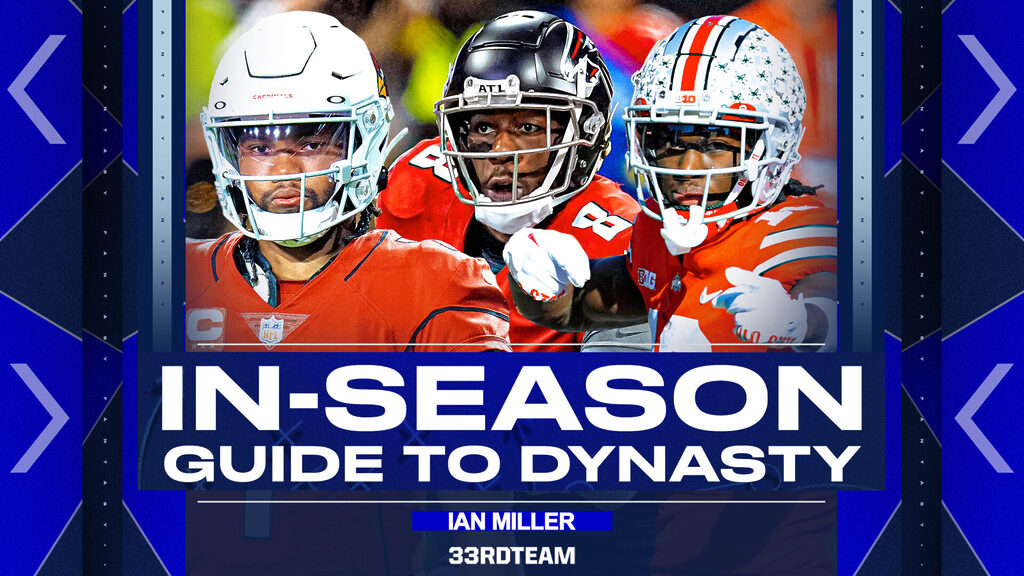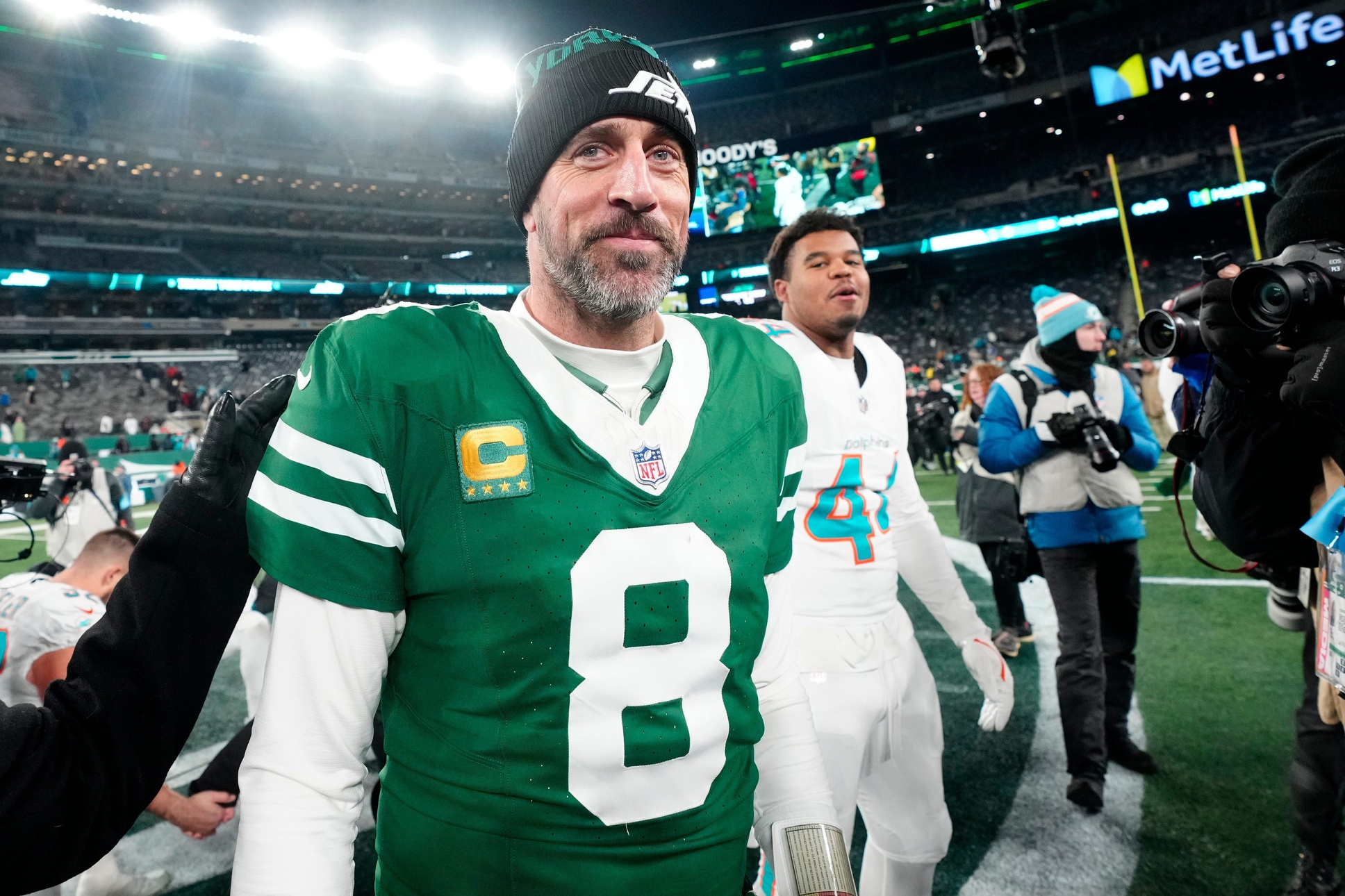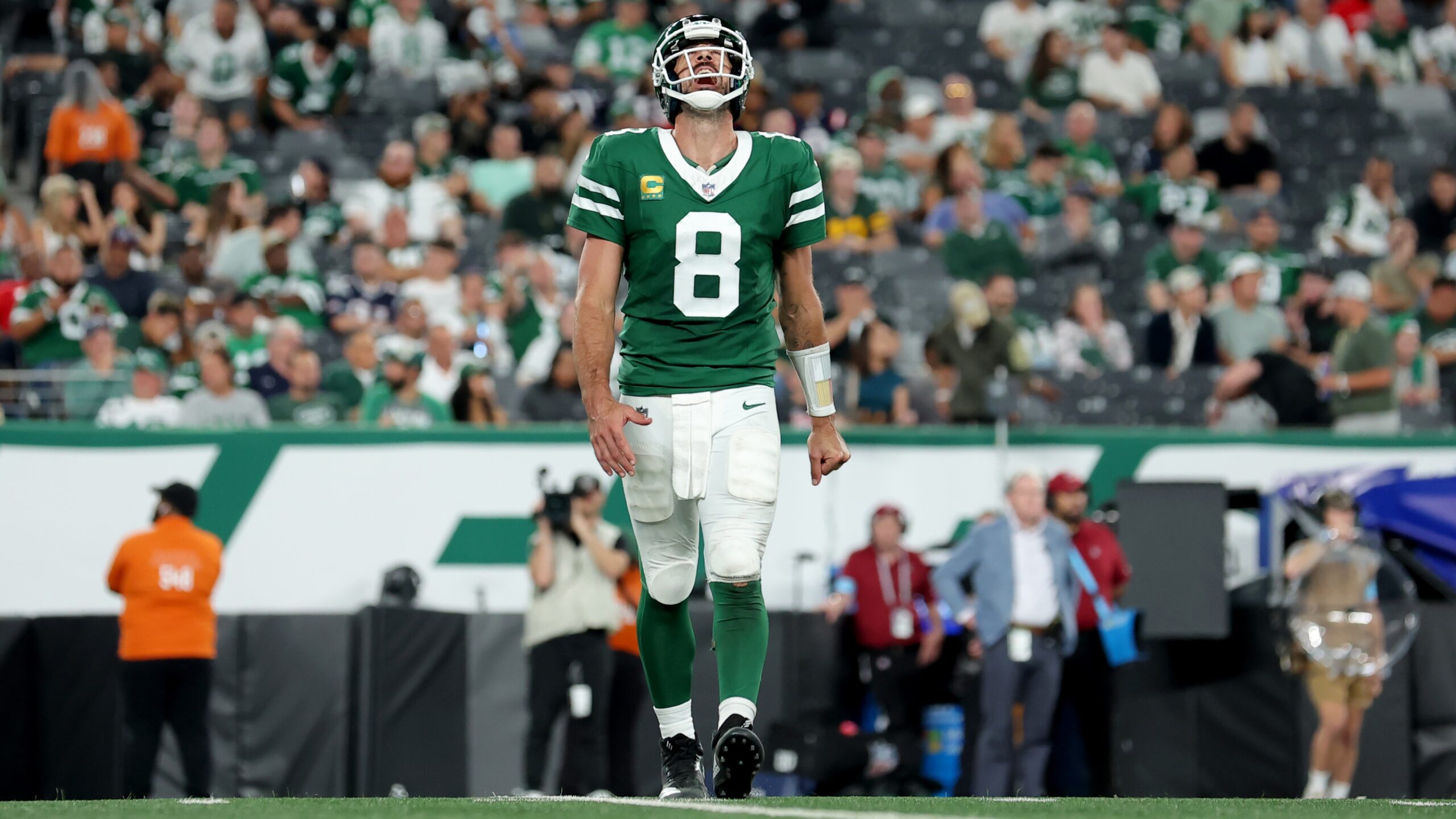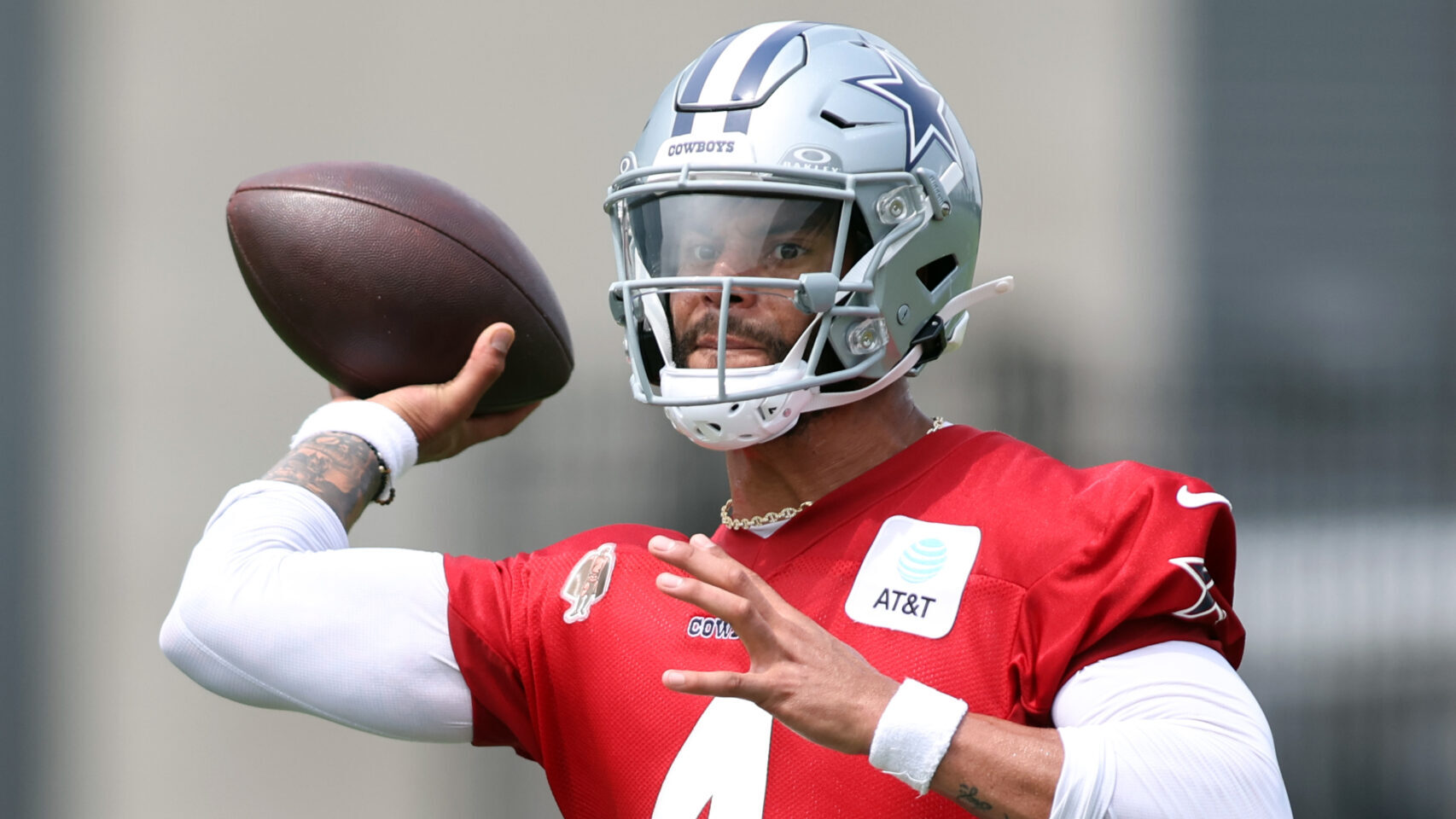Analysis
8/25/23
6 min read
2023 Dynasty Fantasy Football: In-Season Strategy Guide

As players start to score actual fantasy points, the vision for dynasty rosters can get hazy. For dynasty players like ourselves, that can be a huge advantage. For a game won on micro advantages over time, this can propel a dynasty team into a juggernaut.
The key is to ask ourselves three questions: When do we sell? Who are we selling? What are we selling for?
It may seem counterproductive to think of these moves as selling vs. buying. Still, in a sport where variance is prominent, pivoting is vital to having a consistently good roster.
Dynasty Strategy Guide
When to Sell
Timing is everything. If we sell too soon, we could lose a legitimate shot at being the league champion. But if we delay selling, we could be caught holding the bag and get stuck in the middle. Finding ourselves in the middle is the absolute worst place.
While being in the playoffs is never bad, just squeaking in as a six-seed and holding risky assets can be detrimental long term. The odds of winning a championship are quite low, and the ability to improve for the following season is much harder. The odds of a championship are low because the team isn't in the upper echelon because it barely made the playoffs.
Plus, the chance at a championship is 50 percent less than a team with a first-round bye. This makes it harder to build in the offseason because your draft pick is late and you’re holding assets that are less stable and could lose value.
So when should we sell assets for future and stable assets that might score less? The record of other dynasty teams can hold a high level of variance, like the NFL itself. The best way to gauge how our team stacks up is by using the points for standings. That shows how our team has genuinely performed rather than the variance of who your matchup was each week.
If our team is at the bottom of these standings, we can sell and shave our points sooner while pivoting off risk and bettering our draft pick. If our points are among the better teams in the league, we have a longer leash before we sell off inefficient, risky assets.
The closer you get to the trade deadline or postseason with a team near the bottom in points, you’re setting yourself up for an unlikely championship run followed by missed opportunities for better odds moving forward.
Who we sell goes a long way to bettering our future championship odds.
Who to Sell
The consensus in dynasty is to sell all player assets and build through draft picks. While we want the draft pick’s stability and rising value, we should hold onto good player assets. Without good player assets, we simply can’t win championships, our ultimate goal.
So who should we sell? It’s not as if the players we sell won’t be good. We’re looking for inefficiently priced players. If we can get market value for a player with an inefficient market value in the form of a more stable asset that we believe will hold that value or gain, we should.
How do we know if a player has inefficient value? The best and most generic way to gauge inefficiency is by asking yourself two questions: If the season ended now, would their value alter negatively? And if an injury happened, how far would their value fall?
If the answer to those questions was yes, there are better pivots. In which case, what should we be selling for?
What to Sell For
Each step in this process gets progressively more important than the last, and this step is the most vital. These are the assets we are choosing to hold on our roster.
Now the easiest asset to pivot to is draft capital. The market value of future capital is proven to be safe and stable. As the draft year of the pick gets closer, it’s easier to envision the picks being used on real players, causing the value to increase.
We’re holding onto an asset that is locked into its market value and will gain value as time passes.
Its safety is because it can’t sustain an injury or get older. It’s essentially currency for dynasty gamers. Once we identify an inefficient player asset and can sell it for fair market value in picks, we’ve not only averted risk but can capitalize on a higher asset value later.
Figuring out which player asset to sell for is a little more complicated. We know there is variance, making it less safe than draft capital.
But suppose we can identify a player putting up stronger peripherals — metrics such as adjusted yards per attempt, target share, yards per team pass attempt and others — around their market value. In that case, they are likely candidates to hold and gain value, assuming they aren’t an aging veteran.
Trading for a more efficient player at cost can keep you contending in the current season, if your goal is to have a more stable roster. While draft capital can’t do that, it is a much safer, stable asset to hold over time.
Conclusion
This isn’t meant to persuade you to sell all your good assets every season. We don’t want to sell good and efficient assets. The ultimate goal isn’t to win a championship; it’s to win multiple championships.
If we are continually middling and haven’t stocked enough stable assets for the following season, we will likely continue to be middling. If we can add stability to our rosters, we have the opportunity to build on our roster every single season rather than having to make up for depleting assets.
Asking ourselves when to sell, who to sell and what to sell for are the most straightforward steps to become a consistent contender in dynasty.
Follow The 33rd Team Podcast Network on Spotify and Apple Podcasts.








